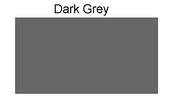|
Formula
Procedure of Application
Development Complete When
Source of Error
Incompatibilities
Precautions
Storage Container
Safety
Recommendations
Similar Reagent
Sequential Reagent
Formula
(In a shallow bowl mix)
Procedure of Application
Development Complete When
Ridge detail is developed upon a water rinse. Source of Error
The consistency of the reagent mixture should be as that of 'shaving cream with small bubbles'. Incompatibilities
Dark colored tapes should be processed using gray fingerprint powder in the reagent mixture instead of black fingerprint powder. Precautions
Practice getting the proper consistency of the reagent mixture prior to use in casework. Storage Container
The reagent is mixed fresh with each new application. Safety
Avoid getting any reagent into your eyes. Recommendations
It may be helpful to grind the dried reagent mixture in a mortar before adding water. Similar Reagent
Sequential Reagent
Vertical Divider
|
Chemical Name
Liqui-Nox Surface Used On Adhesive Tape Surfaces Sensitive To Sebaecous/Eccrine Components Abridged Reagent Sequence
Vertical Divider
|
Ridge Detail Visualized by:
Visible chemical/stain reaction Reagent Applicabilities: Non-Porous surfaces Tape Surfaces Other Chemical Name(s): Alternate Black Powder Working Solution Shelf-life: Prepared as needed |
Process Summary:
Liqui-Nox is a laboratory glassware soap that is used to create a soap/powder foam that is painted unto adhesive tape surfaces.
Liqui-Nox is a laboratory glassware soap that is used to create a soap/powder foam that is painted unto adhesive tape surfaces.
Accepted Deviations:
The reagent mixture can be prepared, then allowed to dried to produce a residue. This dried residue can be reconstituted by the addition of tap water until the desired consistency is obtained. Ash Gray fingerprint powder can be used in place of black fingerprint powder to develop ridge detail on black electrical tapes.
The reagent mixture can be prepared, then allowed to dried to produce a residue. This dried residue can be reconstituted by the addition of tap water until the desired consistency is obtained. Ash Gray fingerprint powder can be used in place of black fingerprint powder to develop ridge detail on black electrical tapes.
Supporting Reference Materials:
- Minutiae Magazine, Summer Special 1994, Issue No. 24, pg.7.
- "Chemical Formulas and Processing Guide for Developing Latent Prints", U.S. Dept. of Justice, pg. 47-48, 1994.
- Advances in Fingeprint Technology 2nd. Ed., Lee, H.C. & Gaensslen, R.E., CRC Press, Boca Raton, FL., 2001.
- Manual of Fingerprint Development Techniques 2nd. Ed., Home Office - Police Scientific Development Branch, White Crescent Press, Ltd., Luton, England, 2001.
- Technical Notes, Lightning Powder Co. Inc., Salem, OR., 2001.




